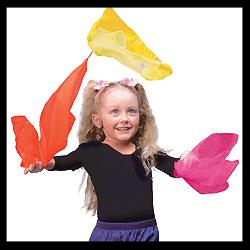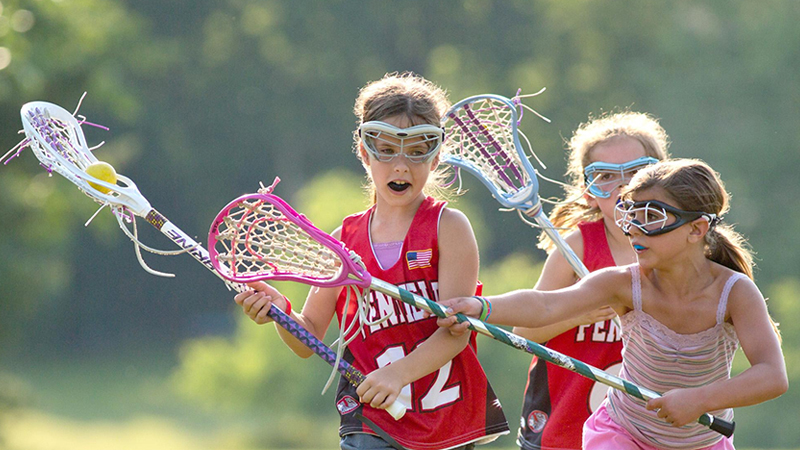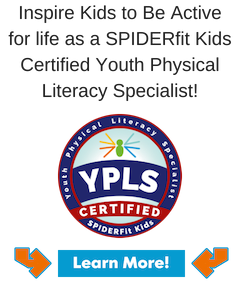By Craig Valency, MA, CSCS
There is nothing more frustrating than your fist day learning a new skill! Think back to some of those experiences…
Inspired by the effortless, graceful figure skating during the winter Olympics, you donned your rental skates, hit the ice, and spent most of your time on your butt!
Roger Federer’s smooth, powerful tennis serve at Wimbledon never seems quite so smooth when you try it on for yourself.
And my personal not-so-favorite learning experience was striking out on the driving range as I tried to hit a golf ball that was just sitting there patiently waiting for me!
Actually, learning new skills doesn’t have to be so frustrating! That’s where the scaffold method comes to the rescue.
The scaffold method modifies a task to allow a child greater support in the goal of reaching their objectives. Much like using training wheels on a bike, a scaffold allows a child to feel what it’s like to do the movement and gain valuable repetitive practice with the skill. Once the scaffold has served its purpose, it’s time to gradually remove them so that children can progress their skills to best approximate the final product.
Here are the top 5 ways of scaffolding a complex motor skill:
1. Object Modification
 This method keeps the spatial-temporal characteristics of the skill relatively in tact while allowing the learner to perform an object manipulation skill that would be too difficult on its own. For example, a child can practice juggling with scarves before using balls. He could hit a large foam ball to practice batting for baseball, or try using a beanbag to learn the skill of throwing and catching.
This method keeps the spatial-temporal characteristics of the skill relatively in tact while allowing the learner to perform an object manipulation skill that would be too difficult on its own. For example, a child can practice juggling with scarves before using balls. He could hit a large foam ball to practice batting for baseball, or try using a beanbag to learn the skill of throwing and catching.
The game of Futsol is a modification of soccer that is played in Brazil. It has greatly improved the soccer skills of young children at a more rapid pace. The ball is half the size of a normal ball, weighs twice as much, and hardly bounces. The teams have five or six players instead of eleven. Futsol players touch the ball, on average, six times more often per minute than in regulation soccer (Coyle, p. 27). Because the ball doesn’t “fly” when kicked, it demands more skillful kicking to move the ball downfield. The success of Brazilian soccer players is a testament to the power of object modification.
The trend in tennis in the last few years has been to use modified balls, rackets, and courts for young children. This allows for a smooth stroke with correct mechanics, as the child doesn’t have to wield a racket that is too heavy or too long. She has the time to set up and react to the slower moving ball. The young tennis player makes more contacts with the ball, and the mechanics are being properly grooved. This results in better motor learning and improved performance once she transitions to playing regulation tennis.
2. Complexity Reduction
This scaffold method reduces the attention demands of the task by providing some sort of assistance. For instance, in a balance and reach task, the child could put his or her hand on the wall for support. In gymnastics, a harness could be used to allow the child to perform a complex or dangerous move with assistance, while reducing the fear of falling.
3. Speed Reduction
This method reduces the overall speed of the movement task, while maintaining the relative speeds of the movements within the task. Slowing down the movement task allows for the correction of small errors that may have gone unnoticed but end up disrupting the accurate execution of the skill.
4. Cueing: Verbal or visual cueing by the coach, or self-cueing by the student, is a great method to reduce task difficulty and improve the outcome. For skills that are rhythmic in nature, for instance, using a metronome or clapping can aid in the execution of the task.
Self-cueing can be used to great effect by having the student chant a rhythmic mantra while doing the task. On an agility ladder, for example, the students could chant: “In, in, out, out” for a specific pattern. Adding another scaffold such as speed reduction, as discussed above, can help even more on this task. Visual cues can be as simple and evocative as a hand smoothly moving across your body as students perform lateral shuffles, to remind them to keep their heads level. This can, of course be combined with an auditory cue such as, “Level head, Level head…”
5. Skill level sequencing
Try sequencing a skill from the most appropriate simpler version and working up to the point that the real skill is being practiced. For example, for the task of hitting a baseball, a child would start by hitting off of a tee at a consistent height, then hitting off of the tee from various heights, and so on, until the actual task is completed.
Skill level sequencing is where “lead-up” games and activities can be used to approximate elements of the regulation game until it can be played properly. Studies have shown that this method is very successful with students of all skill levels (Magill, p. 415).
When it comes time to teach complex movement skills to your students, team, or clients, keep in mind your frustrations when learning new skills. With a little patience and an effective teaching tool box, you can easily regress a skill with these five highly effective scaffolding techniques.
If you’ve had success teaching complicated motor skills, leave a comment. We’d love to hear your some of your tips.
References
Coyle, D. (2009). The talent code: Greatness isn’t born. It’s grown. Here’s how. New York: Bantam Dell.
Gallahue, D., & Cleland Donnelly, F. (2003). Developmental Physical education for all children (Fourth ed.). Champaign: Human Kinetics.
Graham, G., Holt/Hale, S., & Parker, M. (2013). Children Moving: A reflective approach to teaching physical education (Ninth ed.). New York: McGraw-Hill.
Magill, R.A. (2007). Motor learning and control: Concepts and applications (Eighth ed.). New York: McGraw-Hill.
Craig Valency, MA, CSCS, president and co-founder of SPIDERfit, has been a personal trainer for the last 11 years. He is currently working at Fitness Quest 10 in San Diego, an elite personal training and athletic conditioning facility. He specializes in youth strength and conditioning programs that promote physical literacy, injury prevention and optimal performance. Along with training youths from 6 to 18 years of age for general fitness, Craig has also worked with some of the top junior tennis players in the world. He has been a physical education consultant for the Stevens Point school district in Wisconsin for the last 3 years, helping revamp the district wide programming for the K-12 PE curriculum. Craig earned his bachelor degree from UCLA, and Masters Degree in Kinesiology from San Diego State University.





Connect with SPIDERfit!